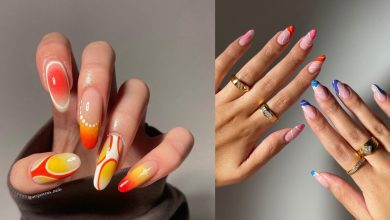Why fungal acne gets worse during monsoon and what experts say you should do

The monsoon season brings lush greenery, cooler temperatures, and a refreshing break from scorching summers but also its own set of skin concerns. One such problem that flares up significantly during this time is fungal acne. Known medically as Malassezia folliculitis, this condition thrives in humid weather and can be both frustrating and tricky to treat.While the term “fungal acne” can be misleading, it’s not actually acne but a yeast-triggered skin condition, it’s a common issue dermatologists see spike during rainy months. Experts point to high humidity, damp clothing, and improper skincare routines as the primary culprits. Below, leading dermatologists and skincare professionals share why it worsens in monsoon, and how you can keep it in check.Dr. Nirupama Parwanda, Dermatologist & Founder of Zolie Skin Clinic, shares: During the monsoon, the air is very humid, making it harder for sweat to evaporate. Monsoon air is damp and heavy, which traps sweat and moisture on the skin, which can increase fungal growth. Also, wearing damp clothes for hours after getting drenched can encourage fungal growth on the back and chest.

Overuse of Occlusive Skin Care Products: Heavy creams and oils can feed the fungus, especially in humid climates. Avoid cream-based makeup products and use matte or powder based products to absorb oil. Avoid layering too many products; it can clog pores. Shower immediately after getting drenched in the rain and after workout at the gym. It’s critical to maintain hydrated skin. Drink plenty of water and try to include foods high in vitamins A and C in your diet.Dr. Prachi B. Bodkhe, Dermatologist at Envi Aesthetics, opines:Fungal acne, medically known as Malassezia folliculitis, is caused by an overgrowth of yeast that naturally exists on the skin. This condition typically worsens during the monsoon due to elevated humidity levels, an ideal environment for yeast proliferation. Excessive sweating, damp clothing, and poor air circulation in humid conditions are the culprits. To manage and prevent flare-ups, it’s essential to maintain personal hygiene—showering promptly after sweating, wearing breathable fabrics, and regularly changing bedsheets and pillowcases. Incorporating lightweight, non-comedogenic skincare products helps to keep the skin balanced. Cleansers or body washes containing zinc pyrithione can be especially effective, as they reduce yeast activity on the skin. A consistent, minimalistic routine to reduce oil, sweat, and moisture retention is key.Dr. Janaki K Yalamanchili, MD DvL, Consultant Dermatologist & Cosmetic Physician at Zennara Clinics Hyderabad, says:So fungal acne, just like all other fungal infections, tends to thrive during humid weather, which is very common during the monsoons. So because of the humidity there is an increased blockage of the sweat glands which causes excessive proliferation of bacteria which also acts as a good growth medium for fungus that is why we see an increase in the number of fungal acne cases. The way you can prevent this is by using good anti-acne facewashes and continuing your acne treatment if you’re already on treatment and making sure that your face is maintained in a drier, non-comedogenic state. You should also switch your moisturisers to light moisturisers and not thick creams. Sunscreens should also be changed accordingly. Taking a good amount of zinc is also very helpful in the prevention of fungal acne.Malini Adapureddy, CEO and Founder of Deconstruct, feels:Fungal acne isn’t actually acne, but a yeast-triggered skin condition that tends to flare up during the monsoon. “The high humidity prevents sweat from evaporating, keeps pores clogged for longer, creating the perfect environment for breakouts. Unfortunately, everyday habits can make it worse, like using oil-based moisturisers, skipping your post-workout cleanse, or overloading your skin with strong, unbalanced actives.

To manage it effectively, simplify your routine. Use a gentle, balanced face wash with ingredients like salicylic acid and niacinamide to unclog pores, reduce breakouts, and control excess oil without drying out your skin. Stick to lightweight, non-comedogenic oil-free moisturiser, with calming ingredients like NMF complex and panthenol that hydrate without clogging pores and restores the skin barrier, making it ideal for oily, acne-prone, and sensitive skin. Avoid over-exfoliating, as fungal acne responds best to skincare that is both effective and gentle, and complete your routine with a broad spectrum sunscreen which has a lightweight water-resistant formula that absorbs quickly into the skin without being sticky. At Deconstruct, we often remind our community that less is more during the monsoons. If your skin feels tight, itchy or stingy, it’s a sign to step back and reset your routine. And if there’s no improvement within two to three weeks, it’s best to consult a dermatologist.”Monsoon humidity is a perfect breeding ground for fungal acne, but the good news is it’s preventable and treatable with the right approach. Across all expert advice, a few tips remain consistent:Keep your skin clean and dry.Use lightweight, non-comedogenic skincare.Avoid oil-heavy products.

Change out of damp clothes promptly.Incorporate antifungal cleansers a few times a week.If your symptoms persist or worsen, a dermatologist can provide targeted treatments to clear it quickly and effectively, ensuring that the only thing glowing this monsoon is your skin, not your fungal breakouts.
Source: times of india
HiCelebNews online magazine publishes interesting content every day in the Makeup section of the Fashion & Beauty category. Follow us to read the latest news.






